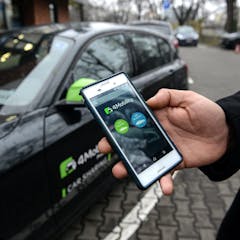
Articles on Transport planning
Displaying 61 - 80 of 81 articles

High-speed rail for Australia has been on the drawing boards since the mid-1980s but has come to nothing. Three states are developing medium-speed rail with federal funding, but NSW is missing out.

Trains and trams get most attention, but ‘tweaking’ bus transit can transform cities. Buses can be more cost-effective and deliver better service, especially for small to mid-sized cities.

In the 1970s, both Kyoto and Melbourne made fateful decisions about their transport networks. Melbourne today enjoys the benefits of trams, while Kyoto lives with the consequences of losing them.

Good public access for Melbourne Airport and others like it depends on not fixating on one solution, like a single rail line, but instead developing multiple options integrated with the city’s needs.

Transport infrastructure has such an impact on what kind of city we become that more democratic planning is long overdue. But public consultation is typically limited and focused on design issues.

Hobart is a smaller city with big city problems that have become an election issue. Recent growth is creating traffic congestion that affects productivity, residents’ health and liveability.

Self-driving, shared, electric vehicles and increasing urban density represent four disruptions that will transform city life. But a transport utopia isn’t a guaranteed outcome of their interactions.

One potential benefit of WestConnex, which remains untouched, is that it could relieve Sydney’s city centre from cars and make it more pedestrian-friendly.

The real challenge is finding appropriate ways to invest in public transport that will not only take pressure off the system but also support improved travel on all modes, including cars.

Recent decisions to proceed with major road projects have not considered viable alternatives, despite this being a legal requirement.

The government claims figures showing the south gets more than the north are misleading.

The evidence suggests a small investment in cycling infrastructure, combined with less punitive policing, would enable more Australians to escape daily traffic congestion.

The rail project may well help get more commuters into the CBD, but offers few benefits for the parts of the broader metro area where most population growth is occurring.

There’s every chance that, if mismanaged, driverless vehicle technologies will entrench the ills of car dependency.

Bike lanes in South Africa were meant to encourage commuter cycling and ease congestion but in Johannesburg the initiative garnered more outrage than support.

Politicised transport projects that flout proper process lead to hostility between residents and governments, and give planners a bad name.

A project set up north of Melbourne’s CBD aims to create a living laboratory for developing a highly integrated, smart, multimodal transport system.

Reckless government investment decisions are sadly the norm when it comes to transport infrastructure. Three key checks on the decision-making process can help ensure taxpayers get value for money.

Perth’s Roe 8 project illustrates all that is wrong with how we are planning and managing infrastructure in our cities.

Roads versus public transport: for decades, these have been the battle lines in debates over transport in our cities. But a revolution in mobility is under way that will transform our thinking.
